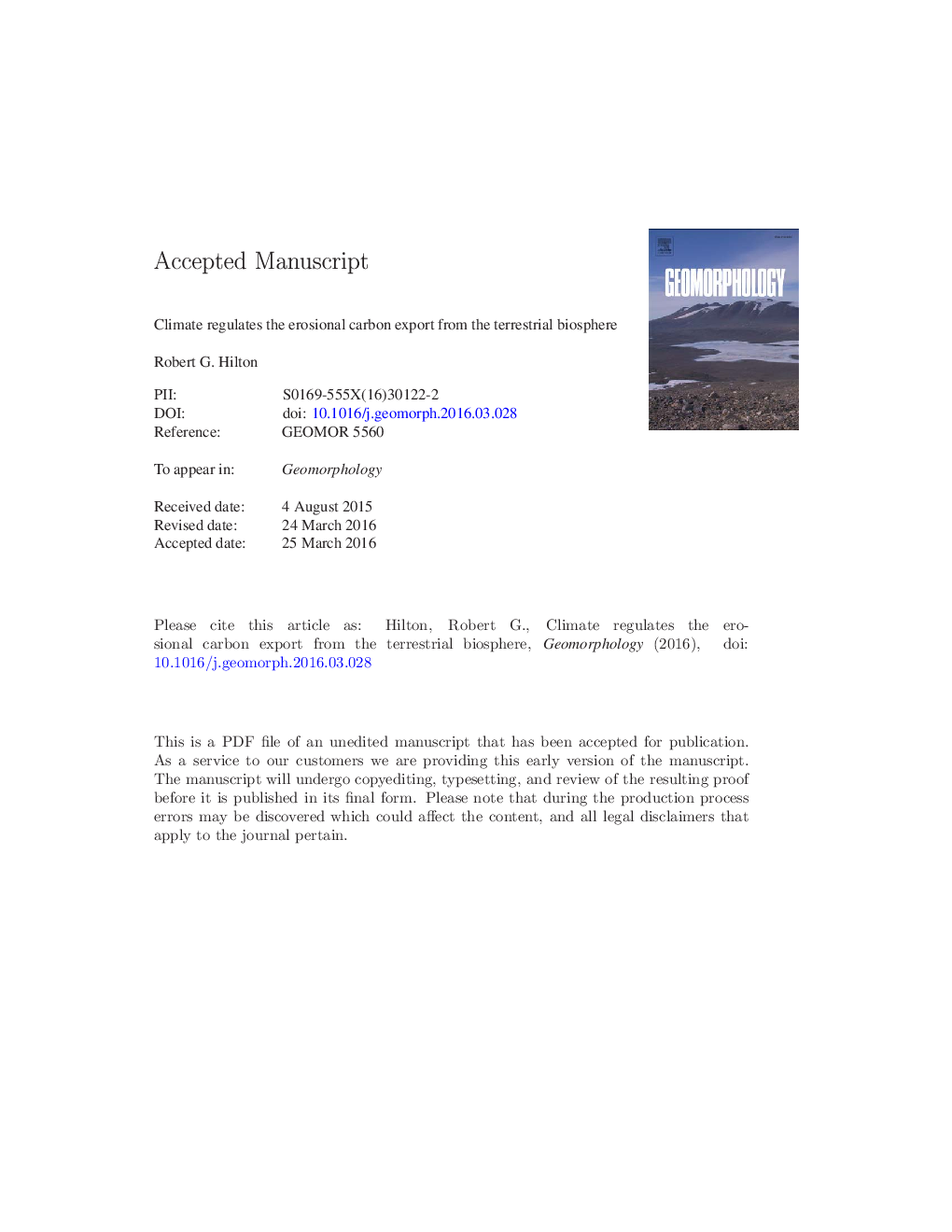| Article ID | Journal | Published Year | Pages | File Type |
|---|---|---|---|---|
| 5781140 | Geomorphology | 2017 | 39 Pages |
Abstract
Climate is shown to regulate POCbiosphere discharge by mountain rivers, by controlling hydrologically-driven erosion processes. In catchments where discharge measurements are available (8 of the 33) a significant relationship exists between daily runoff (mm dayâ 1) and POCbiosphere concentration (mg Lâ 1) (r = 0.53, P < 0.0001). The relationship can be described by a single power law and suggests a high connectivity between forested hillslopes and mountain river channels. As a result, annual POCbiosphere yields are significantly correlated with mean annual runoff (r = 0.64, P < 0.0001). A shear-stress POCbiosphere erosion model is proposed which can explain the patterns in the data. The model allows the climate sensitivity of this carbon flux to be assessed for the first time. For a 1% increase in annual runoff, POCbiosphere discharge is predicted to increase by ~ 4%. In steeper catchments, POCbiosphere discharge increases more rapidly with an increase in annual runoff. For comparison, a 1% increase in annual runoff is predicted to increase carbon transfers by silicate weathering solute fluxes in mountains by 0.4-0.7%. Depending on the fate of the eroded POCbiosphere, river export of POCbiosphere from mountains may act as an important negative feedback on rising atmospheric CO2 and increased global temperature. Erosion of carbon from the terrestrial biosphere links mountain building and climate to the geological evolution of atmospheric CO2, while the carbon fluxes are sensitive to predicted changes in runoff over the coming century.
Related Topics
Physical Sciences and Engineering
Earth and Planetary Sciences
Earth-Surface Processes
Authors
Robert G. Hilton,
